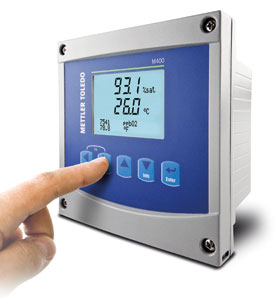

In pulp and paper processes, great emphasis is placed on reducing the costs of brown stock washing. The main purpose is that the black liquor and pulp must be separated after they exit the digester, so that the pulp can go onto the papermaking process. This separation occurs on brown stock washers, where water is used to wash the black liquor from the pulp. The efficiency of the brown stock washing operation has a big influence on costs, chemical recovery and environmental compliance.
Concentration of chemicals is key
Brown stock, the ‘dirty’ pulp coming out of the digester, is washed in a concurrent system with cleanliness increasing with each wash. The goal is to achieve clean stock using a minimum amount of fresh water and to avoid unnecessary dilution of the white liquor chemicals fed at the digester. These chemicals are concentrated in the recovery boiler, and a high concentration of water makes this process inefficient or even impossible.
The concentration of chemicals in the solution coming out of the last stage washer determines the cleanliness of the stock as well as the dilution factor. At this stage, fresh water is added to the system. The amount added determines the cleanliness of the stock, and the concentration of chemicals in the solution going to the recovery boiler. There is a fine balance between effective washing and conservation of the liquor concentration for downstream processing.

Even though it is called the dilution factor, concentration of the brown stock is fairly high and can be successfully determined by conductivity measurement. At this stage in the process, conductivity is in the range of 50 to 100 mS/cm, depending on the individual plant, process and stock. That corresponds to concentrations in the low one digit percent range. Dilution in that sense is relative to the two digit concentrations present in the digester. Conductivity measurement at the brown stock washers requires a sensor that is immune to clogging from pulp fibres and that can tolerate the white liquor chemicals.
Mettler Toledo’s Ingold InPro 7250 inductive conductivity sensor and M400 transmitter offers a solution for this application. The InPro 7250 is designed for in-line measurements of conductivity/concentration in pulp and paper processes. Using the InPro 7250 probe, no electrodes are directly in contact with the process and therefore not directly affected by contamination. The InPro 7250 is constructed of PEEK, which is highly resistant to the white liquor chemicals. For best performance, the InPro 7250 should be installed where it will be in contact with a representative sample of the washing solution, for example, in the washer itself or in the drain line.
The M400 transmitter offers simple operation, precise and reliable measurements and accepts both analog probes and digital sensors.
For more information contact Darren Prinsloo, Microsep, +27 (0)11 553 2300, [email protected], www.microsep.co.za
| Tel: | +27 87 092 7300 |
| Email: | [email protected] |
| www: | www.microsep.co.za |
| Articles: | More information and articles about Microsep |

© Technews Publishing (Pty) Ltd | All Rights Reserved